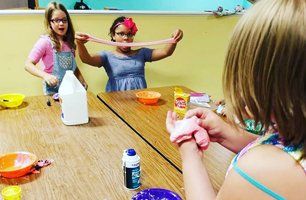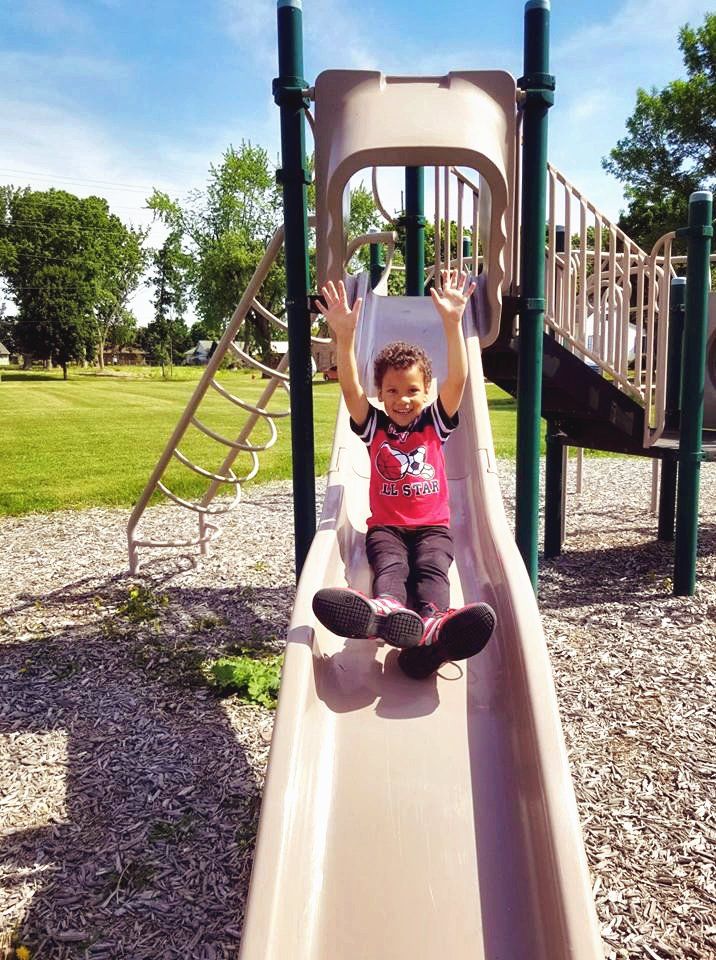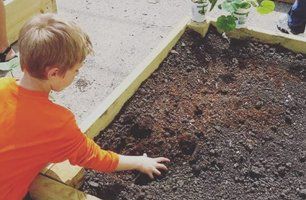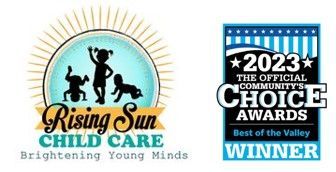Brightening Young Minds
,
This is a placeholder for the Yext Knolwedge Tags. This message will not appear on the live site, but only within the editor. The Yext Knowledge Tags are successfully installed and will be added to the website.
Academics
Academic Courses
Referral Discounts | Monthly Discounts
Monthly DiscountsReferral Discounts
Monthly Discounts
This is a placeholder for the Yext Knolwedge Tags. This message will not appear on the live site, but only within the editor. The Yext Knowledge Tags are successfully installed and will be added to the website.
Quality Care and the Attention Your Child Deserves
Rising Sun Child Care offers a comprehensive and varied curriculum based on the Wisconsin Model of Early Learning Standards.
NAEYC and Play
More about WMELS
Play Based Learning Articles
The WI Model Early Learning Standards (WMELS), specify developmental expectations for children from birth through entrance to 1st grade.
The standards reflect the following domains of a child's learning and development.
- Health & Physical Development
- Social and Emotional Development
- Language Development & Communication
- Approaches to Learning
- Cognition & General Knowledge
The Wisconsin Model Early Learning Standards have been developed by the Wisconsin state departments of Public Instruction, Children and Families, and Health Services. They are based upon research conducted into all aspects of children's early learning and development, from birth to the start of first grade. They encompass guiding principles, developmental expectations, and performance and program standards for the delivery of high-quality education and care to young children. To promote effective implementation of the standards, they have been aligned with the Wisconsin Academic Standards and Head Start Early Learning Outcomes Framework (HSELOF).
Our program provides this enrichment opportunity for all students. We have a play-based program, similar to any school district, that is designed to support each domain and early academic skills.
Play is one of the main ways in which children learn and develop. It is the primary means by which children explore their world and begin to make sense of the world around them. It is evident that play has a major role in the cognitive development of children, but what about meeting those important learning objectives and goals? Through play, children actively post problems, explore solutions, and begin to develop a real understanding of how things function in the world around them, and through an intentionally prepared environment, children gain the skills they need to be successful in school and in life.
A play-centered curriculum allows for teachers to act as facilitators of children’s learning. Activities and environments are planned, in advance, to allow opportunities for children to make choices and safely problem solve and explore solutions in an environment where teachers can expand learning through foundational relationships, observations and assessments, and open-ended questions. There is a balance between teacher-directed and child-led activities. Classrooms are arranged in learning centers. These centers help children decide where they want to play and contain materials that stimulate their creativity and imagination. There are typically sections for science, literacy, writing, reading, dramatic play, blocks and building, and more. The learning environments are stimulating, and welcome children of all cultural, ethnic, and linguistic backgrounds. Our classrooms are a place that children can feel safe to learn, play, and explore. They are organized in a way that supports each child’s development and learning.
Observations and assessments of each child inform the planning, lessons, and environments prepared by our qualified teachers.
Children learn through their play. Play and learning go together. They are not separate activities. They are intertwined.
Play is a child’s context for learning. Children practice and reinforce their learning in multiple areas during play. It gives them a place and a time for learning that cannot be achieved through completing a worksheet.
For example, in playing restaurant, children write and draw menus, set prices, take orders, and make out checks. Play provides rich learning opportunities and leads to children’s success and self-esteem.
HELPFUL LINKS:


Why Have Model Early Learning Standards?
Based on research and supported by evidence-based practices, the WI Model Early Learning Standards provide a framework for families, professionals and policy makers to:
Download the Family Tip Sheets
- Share a common language and responsibility for the well-being of children from birth to first grade
- Know and understand the developmental expectations of young children
- Understand the connection among the foundations of early childhood, K-12 educational experiences, and lifelong learning

VISIT US
,
This is a placeholder for the Yext Knolwedge Tags. This message will not appear on the live site, but only within the editor. The Yext Knowledge Tags are successfully installed and will be added to the website.
This is a placeholder for the Yext Knolwedge Tags. This message will not appear on the live site, but only within the editor. The Yext Knowledge Tags are successfully installed and will be added to the website.
HOURS
This is a placeholder for the Yext Knolwedge Tags. This message will not appear on the live site, but only within the editor. The Yext Knowledge Tags are successfully installed and will be added to the website.
Monday
Tuesday
Wednesday
Thursday
Friday
Saturday
Sunday
This is a placeholder for the Yext Knolwedge Tags. This message will not appear on the live site, but only within the editor. The Yext Knowledge Tags are successfully installed and will be added to the website.
CONTACT US
This is a placeholder for the Yext Knolwedge Tags. This message will not appear on the live site, but only within the editor. The Yext Knowledge Tags are successfully installed and will be added to the website.
This is a placeholder for the Yext Knolwedge Tags. This message will not appear on the live site, but only within the editor. The Yext Knowledge Tags are successfully installed and will be added to the website.
Privacy Policy
| Do Not Share My Information
| Conditions of Use
| Notice and Take Down Policy
| Website Accessibility Policy
© 2024
The content on this website is owned by us and our licensors. Do not copy any content (including images) without our consent.
